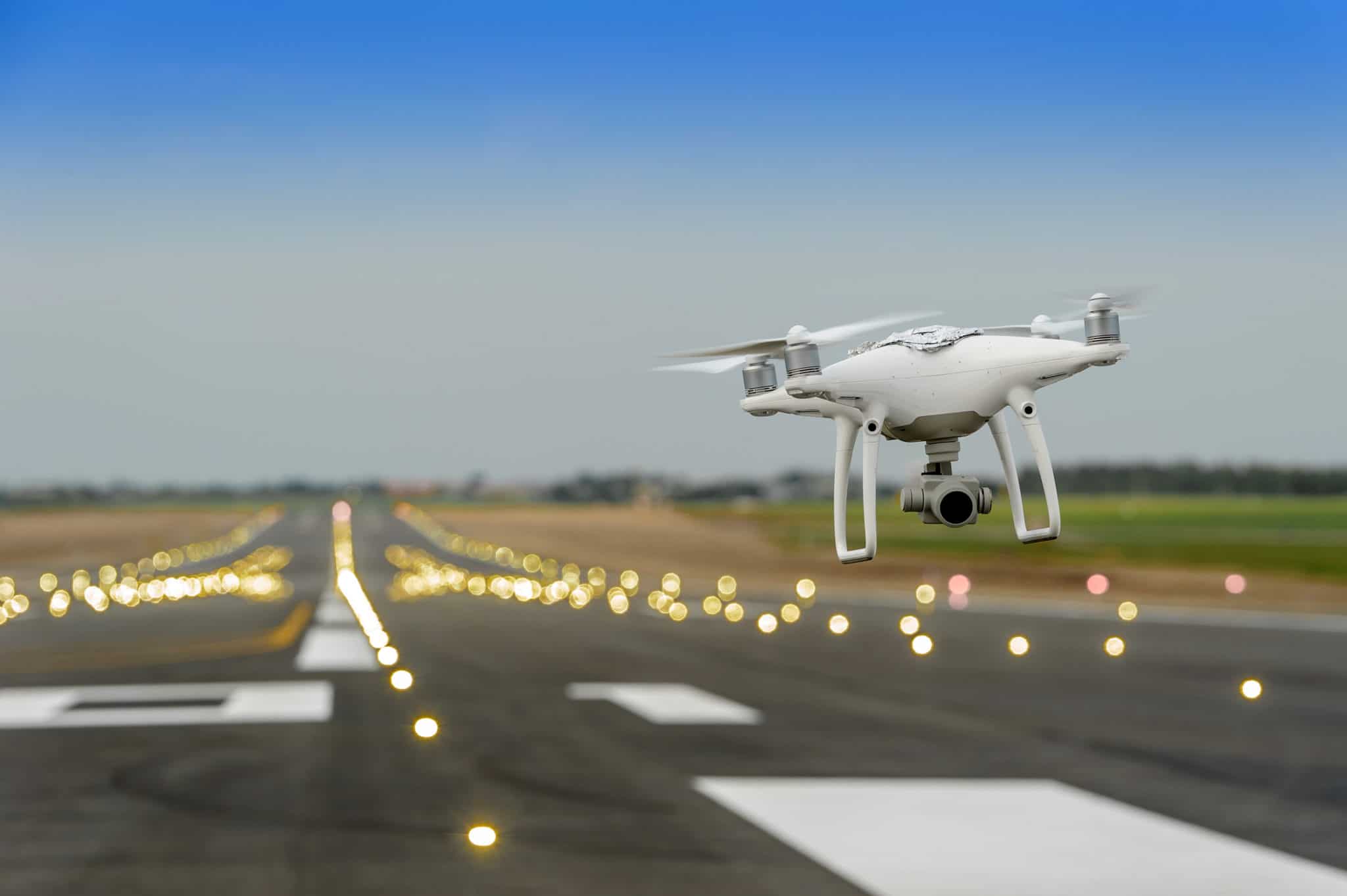Smart drone detection technology automatically alerts security providers when an unauthorised drone enters protected airspace. Sensors capture information about the aerial intruders, including the type of drone, flightpath and location. But how should security teams react when an unauthorised drone enters protected airspace?
For organisations beginning their airspace security program, the key to the success of their counter-drone technology is creating proactive response protocols in the event of a drone incursion.
When a person intrudes on a property, a security team may first locate and then apprehend the trespasser. With drones, this response becomes three-dimensional. Technology can alert security to the presence of an intruding drone and technology can eliminate the intrusion. However, the technology to apprehend, eliminate or hijack the drone is not commercially available, or even legal in most cases.
With smart airspace security in place, security providers can look beyond the immediate yet illegal instinct to eliminate the threat by force and instead, turn to existing standard operating procedures (SOP’s) to advance their response protocols before, during and after a drone incursion.
Stage 1: Before the incursion
- Scope out the local landscape: identify likely take-off locations, hang no-fly-zone signs and/or install cameras to deter potential pilots
- Practice, train, and educate your security team: airspace security programs should begin under ideal, “blue sky” conditions. Security teams can connect and understand how to use Dedrone software, assign roles in the event of an incursion and conduct training and response exercises.
- Engage local law enforcement: determine the criteria Provide local law enforcement the information they require to approach and apprehend an unauthorised drone pilot in the event of an emergency airspace intrusion. Consider table top exercises with all first responder stakeholders.
Stage 2: During the incursion
- Respond to automated alerts: alarms are triggered as soon as the approach of a drone is detected. Dedrone alerts are triggered in the Dedrone software platform and can be sent through SMS, e-mail, network (TCP/IP), SNMP or smartphone push notification.
- Monitor “reach in time” to the protected area: Dedrone software provides information on “reach in time” – the duration of time and distance until the drone reaches a critical point of interest, such as an airport runway, a data centre cooling unit, or correctional facility’s recreation yard.
- Deploy security team to follow drone, and approach or apprehend pilot: Dedrone’s detection sensors, deliver flightpath information and localisation of the drone, providing security teams evidence needed to locate a pilot.
- Protect assets with passive countermeasures: Depending on the assets being protected, all organisations can deploy passive countermeasures, including lowering blinds to prevent aerial espionage, monitoring WiFi networks for intrusions, leading people away from open or exposed areas or halting operations until the drone threat has been resolved.
- Alert local law enforcement: Local law enforcement can deploy additional resources to help apprehend drone pilots. In the event of damage to your property, insurance providers may require statements before you can recoup damages. Law enforcement statements may also help with any future prosecution or litigation for destruction of property or losses sustained due to operational disruptions.
Stage 3: After the incursion
- Build threat profile based on historical analysis: Dedrone produces automated summaries of drone activity, providing information such as most frequent times and days drones appear and drone hotspots. Understanding flight patterns is the best form of prevention. An unauthorised drone may visit a protected site multiple times to survey the area and find security vulnerabilities. In Dedrone’s experience, we see 3-5 flights prior to a bad event. If a flight patterns are identified, security teams can appoint resources to prevent operational harm before it occurs.
- Update security procedures according to the threat profile: it may be that drones are appearing during shift changes, shipping/receiving, or concurrent with significant events at the site, such as game days or executive meetings.
- Post “No-Fly-Zone” signage: drone pilots that intrude on protect airspace may be unaware of any airspace restrictions – for those pilots who may be “clueless or careless,” local signage may help indicate that the area is protected by drone detection technology.
By Amit Samani
To find out more information about Dedrone, visit: https://www.dedrone.com/
